When a country’s central bank reduces its interests rates below zero (i.e., “goes negative”), the action should boost the relative appeal of stock assets. That is the theory. Unfortunately, recent policy initiatives by the European Central Bank (ECB) and the Bank of Japan (BOJ) have failed to inspire their respective stock markets.
The ECB first began fooling around with negative interest rate policy in June of 2014 by lowering its overnight deposit rate to -0.1.% It went to -0.2% in September of 2014; it went even lower (-0.3%) by December of 2015. Did these rate manipulating endeavors benefit European equities or hurt them? The EuroStoxx 600 Index moved lower shortly after each of the interventions and it currently trades at a lower value since the inception of negative rates.

Meanwhile, the Bank of Japan (BOJ) became the second major player to announce plans to charge financial institutions (-0.1%) for the privilege of depositing money. Since the announcement on January 29, 2016, the Nikkei 225 has shed 7.5% of its value. The price depreciation even includes a monster 7% snap-back rally – a price surge that came on speculation that the BOJ will enact more “stimulus” due to persistent recessionary pressures.
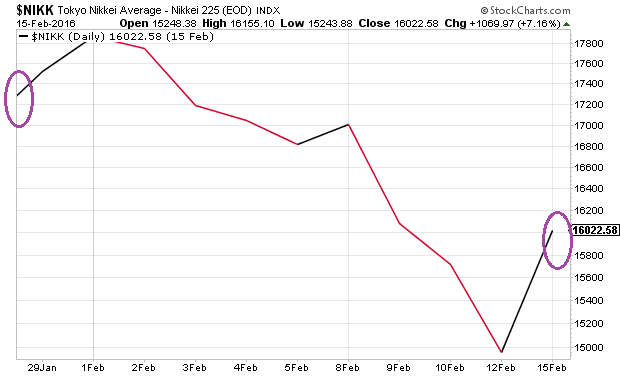
Naturally, front-loading an enormous rally in stock and real estate prices to create a wealth effect is not the sole aim of a country’s central bank. Academic policy leaders believe that sub-zero rate policy strengthens a region’s or nation’s export competitiveness by weakening a corresponding currency. Take a peek at the falling euro via Guggenheim CurrencyShares Euro (N:FXE) since June of 2014.
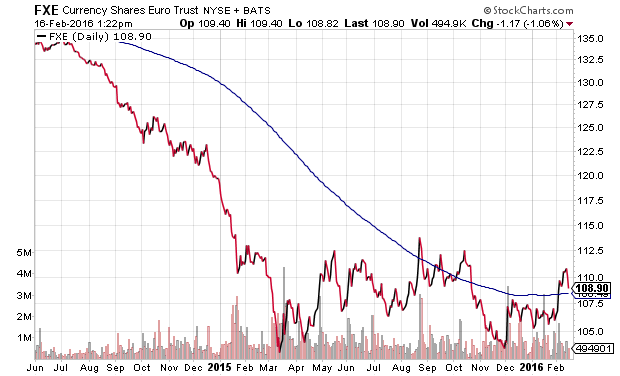
On the flip side, European exporters haven’t exactly been lighting the world on fire since its currency cratered. Trade volumes have been largely flat. Whatever exporting advantage might have been reaped from a a weaker euro-dollar was nullified by anemic demand around the globe. It seems there is more to winning the global trade game than engaging in currency wars.
And there’s more. Sometimes, a country’s best laid plans go awry. The yen via Guggenheim CurrencyShares Japanese Yen (N:FXY) has actually gained 5.5%-plus since the BOJ lowered its target rate to -0.1%. The hope that additional depreciation in the yen would boost export competitiveness – absent more successful efforts to depreciate the currency – may backfire.
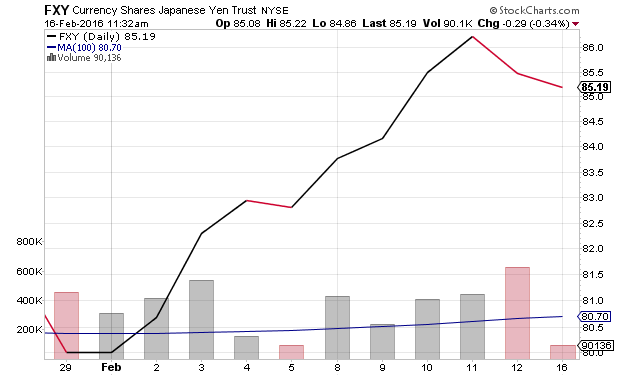
If negative interest rates are unable to create a wealth effect and have an uncertain track record with respect to boosting export competitiveness, why do it at all? Hope. Zero percent rate policy coupled with quantitative easing (QE) in the United States succeeded at creating a wealth effect and depreciating the U.S. dollar up until the Federal Reserve began tapering QE stimulus in 2014. The hope around the world had been that the Fed’s gradual stimulus removal in the U.S. since 2014 would allow zero percent rates to work better in Europe and Japan. It didn’t. And with few other tools at the disposal of foreign central banks, “going negative” became the illogical conclusion.
Is it possible that negative rates in Europe and/or Japan will eventually work? Either to boost respective economies abroad or foreign asset prices for stateside investors? Anything’s possible. However, it has been more beneficial to sell into international equity strength. Consider the iShares MSCI ACWI (O:ACWI). Buying the dips of the previous bear market rallies proved damaging.
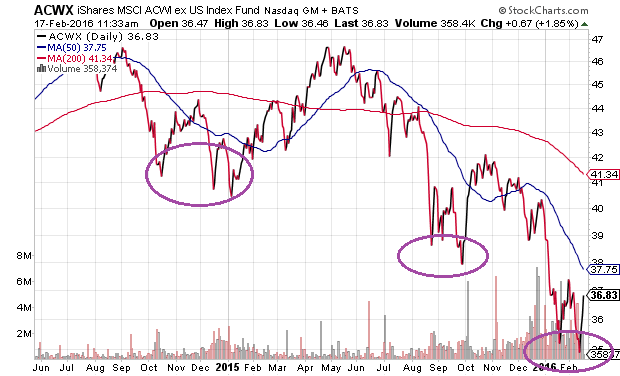
Of course, the central bank of the United States has not resorted to negative interest rates… yet. On the contrary. The Federal Reserve has gradually removed stimulus over the last few years. It ended its final rate manipulating bond purchase (QE) in December of 2014; it raised overnight lending rates 0.25% in December of 2015.
Whereas the ECB in Europe and the BOJ in Japan may not be able to revive risk appetite through monetary policy alone, the U.S Fed can. Interest rate gamesmanship fostered the 10/02-10/07 stock bull; it front-loaded the stock rally for the 3/09-5/15 bull market. Nevertheless, until the Federal Reserve reverses course by opting for zero percent rates with a 4th round of quantitative easing, bear market rallies will continue to deceive those who hide their heads in the sand.
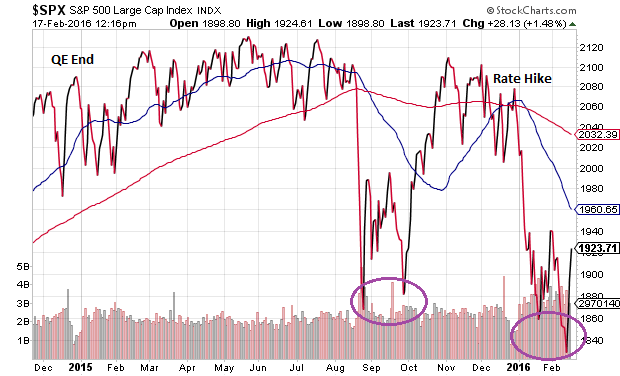
If you are already prepared for the S&P 500 to fall 20%, 25% or 30% from its May high – if the SPDR S&P 500 (N:SPY) falling to 170, 160 or 150 does not faze you – then you would not need to make changes to your portfolio. On the flip side, investors who recognize that the risk-reward backdrop for U.S. equities remains unseasonable may wish to reduce their overall U.S. stock exposure. Selling into a bear market rally can help one raise the cash desired to weather the series of tornadoes yet to come; it also gives one the confidence to increase stock exposure at more attractive prices. Consider a cash level of 25% to 35%.
Disclosure: Gary Gordon, MS, CFP is the president of Pacific Park Financial, Inc., a Registered Investment Adviser with the SEC. Gary Gordon, Pacific Park Financial, Inc, and/or its clients may hold positions in the ETFs, mutual funds, and/or any investment asset mentioned above. The commentary does not constitute individualized investment advice. The opinions offered herein are not personalized recommendations to buy, sell or hold securities. At times, issuers of exchange-traded products compensate Pacific Park Financial, Inc. or its subsidiaries for advertising at the ETF Expert web site. ETF Expert content is created independently of any advertising relationships.
